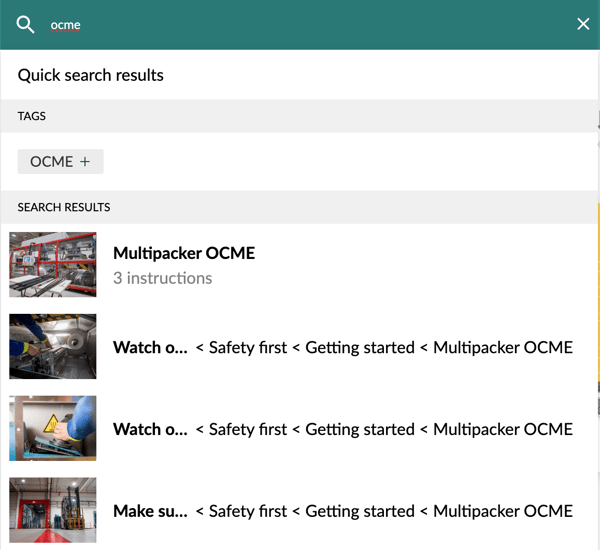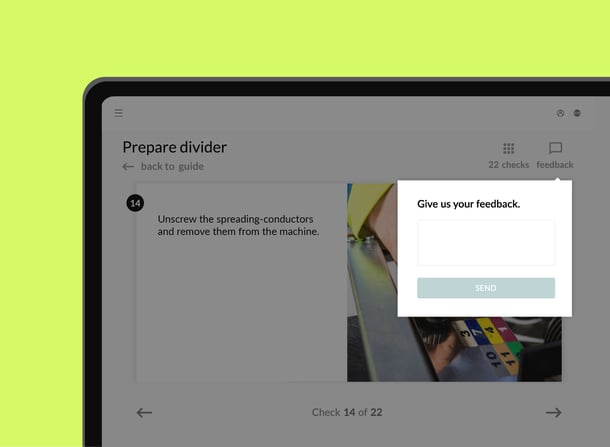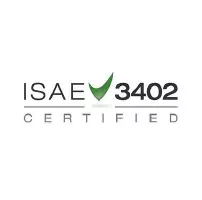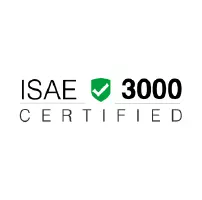“In which folder can I find those instructions used once a year for cleaning the filters of this machine?”
Only relying on folders is an inefficient way of structuring SOPs.
By creating tags for your instructions, you can easily categorize and label them for effortless searches in order to always find them - no matter in what workspace, guide, or topic you save them.
Let's discover why tagging is so convenient, and how you can set up your own tag system for your instructions.
- Tag = a keyword you assign to specific content based on their characteristics or areas of usage:
- Badge = a restricted tag that can only be managed by the SwipeGuide Platform Admin to mark “best practices” or “global standards”:

Why tagging?
Why are tags and badges superior to the traditional folders when structuring SOPs?
Folders are based on an old paradigm of a filing cabinet with drawers and folders. But, technology can be so much smarter in organizing documents than that. The big difference lies in the scalability of tags: a SOP or instruction can only be found in one folder at a time, but the same instruction can have an endless amount of tags to be found by the user.
- Example: Filter cleaning.
You’ve created an instruction and you want to share it with others. If you’d be working with folders, you'd have to pick one specific folder or duplicate the instruction, which could cause clutter issues with versioning. When using tags on the other hand, you can add as many tags as you want to improve searchability of the category data you created. For this specific instruction, you could use tags including “filter”, “cleaning”, “CILT”, “name of the machine”, “name of the line where the machine is located”, and “name of team/department who performs the task”.
Tags are the most effortless tool for structuring SOPs and adding data to content without the hassle of folder layers.

Best practices for a clear SOP structure.
1. Tag categories.
Start by clarifying what your tag categories or types are in the most high-level types possible. Keep the goals of your end-users in mind and don’t complicate things. In the example of work instructions for manufacturing, you could for example choose between the following tag categorie
- Task type: safety, cleaning, maintenance, changeover
- Instruction journey: assembly, commencement, operating, troubleshooting, maintenance, recycle
- End-user: beginner, medior, senior, expert, manager
- Machinery: brand, model, type, year
Remember to keep track of your tag categories - creating a “master list” of all your categories can be very helpful. You’ll also find a tag overview in the SwipeGuide CMS.
2. Avoid tag overload.
Sometimes it can be tempting to create as many tags as you possibly can for an instruction. This “tagging overload” can backfire badly and actually make it unclear what tags have been used and which ones you should use when looking for content.
There is no limitation to the number of tags we recommend to use per instruction, sometimes more tags make it easier to find the right information as long as the tags are relevant to the content.
2. Consistency is key.
Try to make your tag structure consistent and standardized in order to enhance searchability, scalability and user-friendliess. Things to keep in mind are:
- Singular or plural?
- Word type: Verbs, nouns, adjectives, or all of these?
- Capitalization or lower case?
- Symbols and characters?
3. Keep it simple.
How many words should a tag be?
Our recommendation is simple: keep it to one word per tag.
Using that filter example again, instead of creating one tag for “filter cleaning”, we recommend to separate these to two tags: “filter” and “cleaning”.
4. Combine with folders.
The best way to optimize and structure SOPs is making use of both tags AND folders (in the case of SwipeGuide, we use “topics” and “guides” instead of folder).
You can use topics or guides as general buckets to organize your content and then use tags and badges to make them easy to find. It can be time-consuming to tag every instruction.
If your tagging structure is complex it’s difficult to remember all tags when you need them and with several instruction editors it could be that you all create different structures for using tags. If you’re producing a relatively small amount of work, using tags might not be productive.
Summary.
According to research from University of Washington (2008), it’s easier to find files using labels rather than folders, especially when there is a vast amount of information. However, because folders let you visually put away your work, they make you feel more organized.
Arguably, the combination of using folders, tags, and badges when structuring SOPs is the safest way to always have access to the correct information when it’s needed no matter how much information you have.
Want to learn more?
👉 How to structure your instructions for accessibility.
👉 One Point Lessons for Better Frontline Training.
👉 Learner-Focused Instructional Design Principles.







